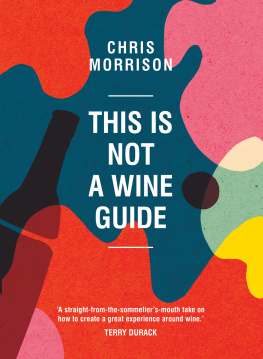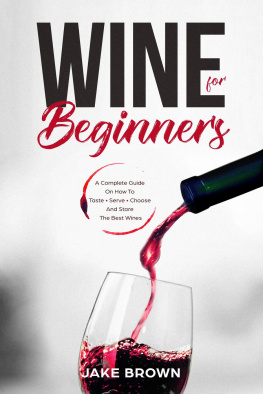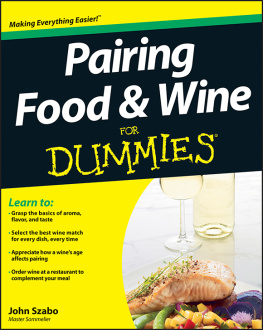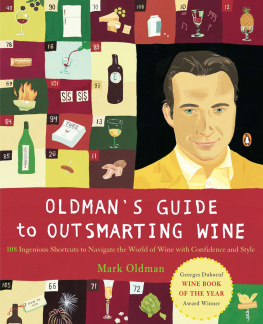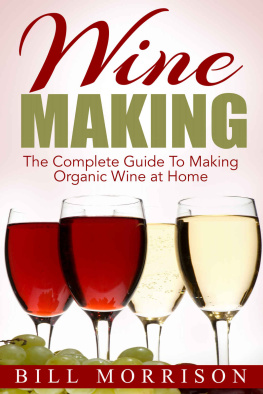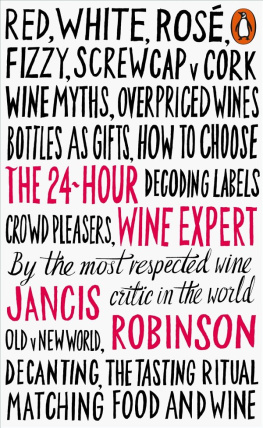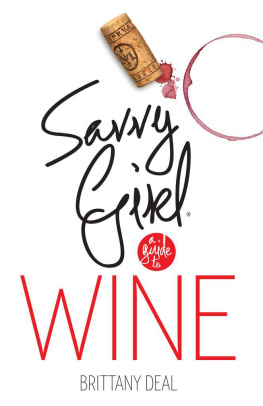
WITH A FOREWORD BY TERRY DURACK
THE NEW LANGUAGE OF WINE
Award-winning sommelier Chris Morrison believes that your wine decisions should be driven by your own sense of taste and by the way you like to eat, drink and live. In This Is Not A Wine Guide he helps readers develop the confidence to choose, purchase, serve, share and ultimately even collect wine without feeling the need to rely on the old rules involving notes, scores, jargon and reviews.
Morrison answers the question all of us ponder when faced with choosing wine from a wine list or from the bottleshop shelf: Where do I start? This Is Not A Wine Guide tackles the fundamentals and then moves from the bottle forwards: into the reasons you choose it, open it and drink it; with what company, under what circumstances, in what glasses and with what food.
Because this is a wine book for people who also love food. For Morrison, food and its taste and textures represent the narrative that can unlock wine wine doesnt make sense without food.
This Is Not A Wine Guide is packed with information advice to help you get the most out of your wine experience, whether its cracking open a bottle for a barbecue, navigating a wine list in a restaurant, wondering what to serve with kimchi, or what to do when the cork crumbles.
Chris Morrison has over 20 years experience as a sommelier in the UK and Australia. He has worked for Sir Terence Conran at Bluebird and Coq dArgent in London, and for Australian restaurants including Sydneys Guillaume at Bennelong, and Quay. Chris is an experienced keynote speaker, wine educator, wine judge and writer.

Foreword
I like a good sommelier. Whats not to like about somebody who brings you wine? But even so, when top sommelier Chris Morrison came in to train up a roomful of restaurant reviewers for the Sydney Morning Herald Good Food Guide on how to judge a wine list, I just assumed he was going to tell us stuff we already knew. Yawn.
Instead, he woke us up to the fact that wine had changed. He spoke of new varietals (so different from even ten years ago), and new ways of drinking. He talked about the structure of a wine and its relationship with food, and about tricks of the trade that only a somm would know.
Clearly, he has a desperate need to make wine make sense. So we should all be pleased that he has decided to bottle all the stuff he knows into a book that is as refreshing as it is helpful.
Wine writers tend to write from the bottle backwards: the winemaker, the vineyard, the year, the harvest, the philosophy. All good stuff, but sommeliers take it forward as well, dealing more with the experience of drinking it, and why, and with what. Chris is on our side. Wine isnt a product, or a commodity, or something out of reach of mere mortals, but something that simply makes eating more fun. As Chris says, wine doesnt make sense without food.
So this is different from other wine books; a sort of straight-from-the-sommeliers-mouth take on how to create a great experience around wine both in the restaurant and at home. Its about how Australia has changed from a drinking culture to a wine culture; how the old rules of judgement (aroma and flavour) have been replaced by structure and texture; about the merits of wine scoring versus smashability.
Read this book and you will find out how wine gets its colour, why some wines age better than others, why alcohol percentages cant be trusted, and why certain wines make your mouth all furry. But because hes a sommelier, accustomed to talking to chefs about building and layering flavour in a dish, and to diners about skin contact, acidity, tannin; youll find out so much more. Chris uses food to unlock wine, which to me, as an eater first, drinker second, makes a lot of sense.
I particularly like the quietly subversive ideas planted throughout the book like rosebushes in a vineyard (chilling shiraz knocks back the sweetness; oxidation is all about umami; the 30-second rule when entertaining). I like the section on buying wine, which he divides into Traders, Premiums and Investments, and I like that he updates the tiresome idea of wine-matching to the sort of food we really eat cured meats, marinated raw fish, charred lamb chops and salty, deep-fried potato chips.
The best thing about Chris Morrison is that he genuinely wants everyone to know as much as he does and to love wine as much as he does. Thanks Chris. Well do our best.
Terry Durack
Wine the new rules
I hated my first glass of wine. It was warm and white and sweet and I thought to myself, How can anyone drink this stuff?. I was fifteen and was still convinced that my life involved being a professional footballer, champion golfer or world surfing champion. As someone who has now spent nearly their entire working life in the wine industry, it would appear that life is not without a sense of irony.
As a sommelier, educator, ambassador, writer and judge I have witnessed firsthand the incredible changes in wine over the last two decades. What I have also seen is that even though the way wine is made and consumed has evolved, the language and principles we use to communicate about it have not. I feel it is time for a new approach to wine. One that reflects the contemporary wine marketplace as much as it does the changing tastes of a highly informed and experience-driven wine drinker. Restaurants and wine bars have become the new social rituals for diners and drinkers. The reality that consumers can and will learn more about wine in the context of food and dining has finally arrived.
The inescapable fact about wine is, no matter how hard we try, no matter how evolved our palate becomes, or how broad our knowledge is, wine is an inherently personal experience, which is largely defined by our own sense of taste. This book is about helping you understand and enjoy wine through the prism of your own preferences how you like to eat, cook and entertain. I want you to feel comfortable that these and not accumulated, complex threads of knowledge should always be your starting points. And yes, just like a sommelier, this book is about understanding the finer points of what to serve with what. But we wont be arriving at that point through a technical approach. First and foremost, this is a practical, lifestyle guide to knowing wine. How you actually live should be at the centre of all your wine decisions, because choosing wine, like anything else you choose in your life (a suit, a dress, where to holiday), should be based on your habits and interests, on what you prefer and on your budget. I cant teach you everything there is to know about wine, but what I can do is show you an approach. And I can tell you the questions you should ask along the way, both of yourself and of anybody you buy wine from, so that you can keep learning.
We have a relentless amount of technology available to us today, and it instantly connects everyone to everything at anytime, anywhere. Despite the virtualness of life, we still have a core need to feel tangibly connected to people in a flesh-and-blood sort of a way. We need engagement in actual social rituals to achieve this, and rituals that bring us together physically. Wine and food are so often at the heart of such occasions and its this aspect that drives me in what I do. I believe wholeheartedly that opening a bottle of wine is not so much about drinking, as it is about sharing a human experience. Its about inviting someone into your home for a meal. Its about signalling trust or celebrating a moment in time. Its about a night out with friends. Its about making memories and marking occasions. With all the shifts, bumps and changes along wines journey through history, as both a liquid and as an overarching industry, this basic denominator of wine as a conduit for human interaction never changes.

